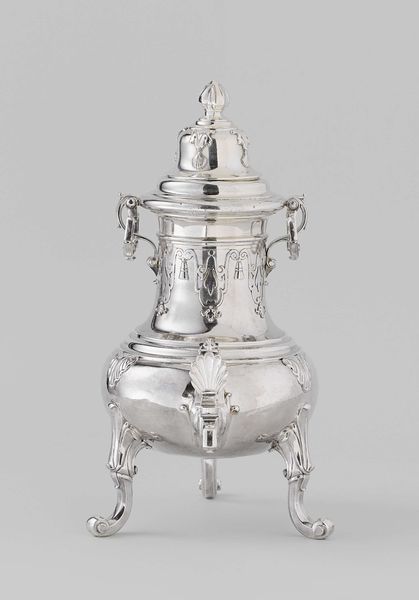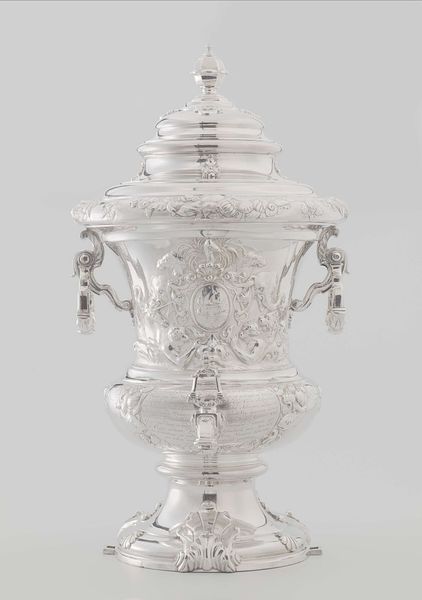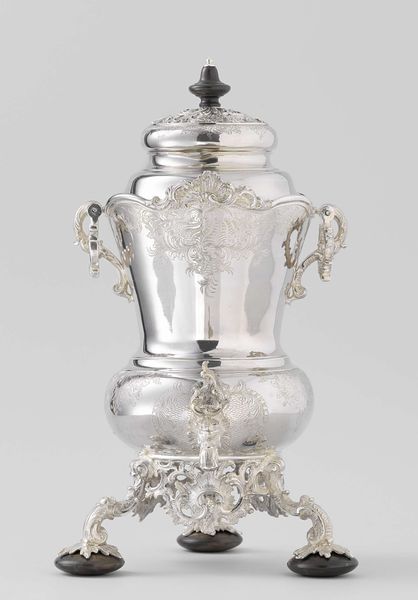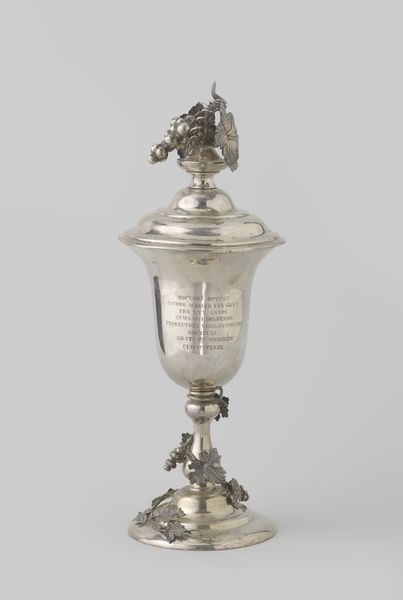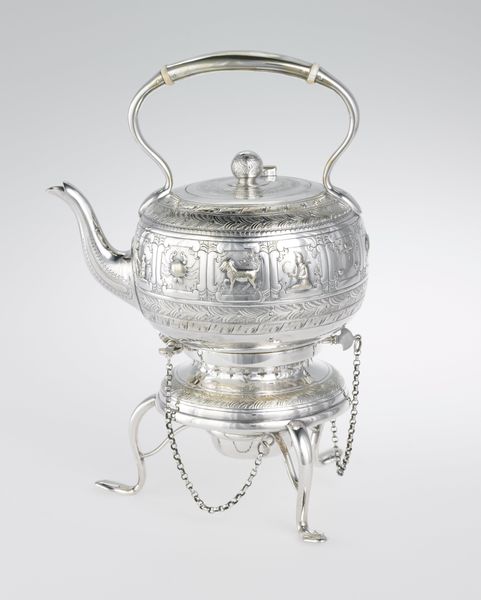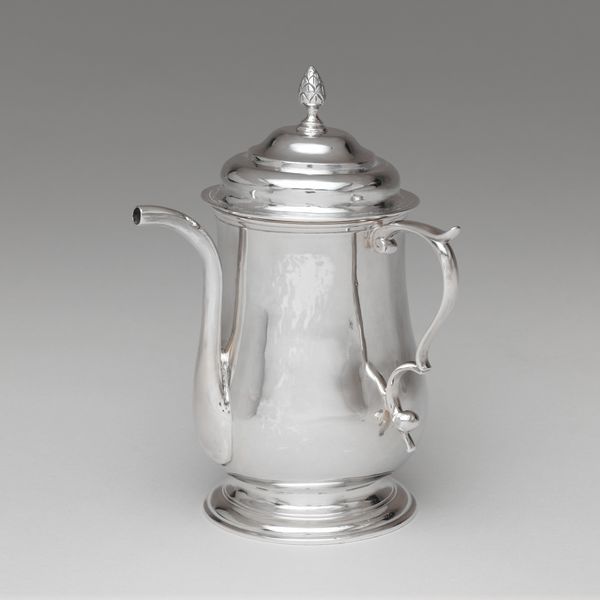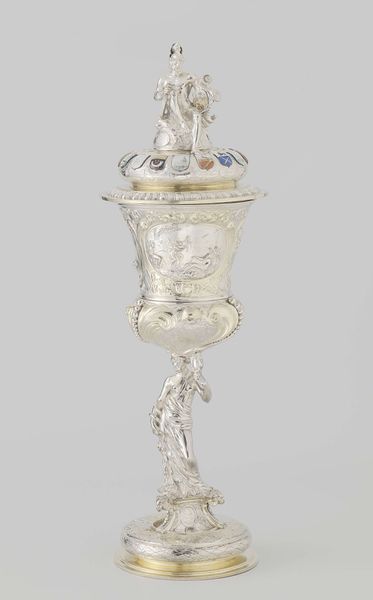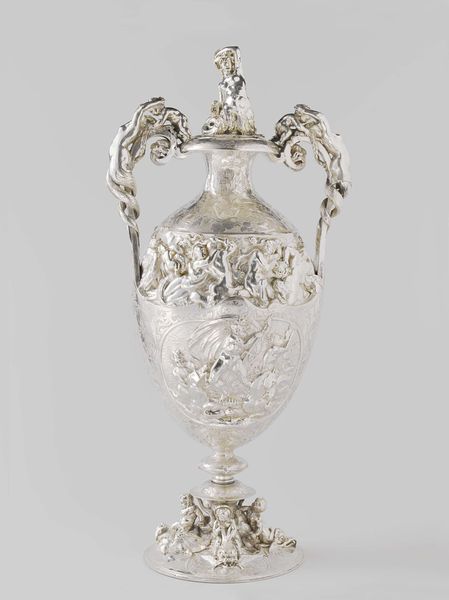
Kraantjeskan in de vorm van een tuinvaas met één kraan en twee hengsels. Met het gegraveerde wapen van Stadhouder Willem IV 1720
0:00
0:00
silver, metal, sculpture
#
silver
#
baroque
#
metal
#
sculpture
#
decorative-art
Dimensions: height 33.5 cm, width 17.3 cm, depth 19.3 cm, weight 1357.0 gr
Copyright: Rijks Museum: Open Domain
Editor: Here we have an interesting piece: a silver Kraantjeskan, or water fountain, made in 1720 by Jesaias Engouw. It's formed like a garden vase and has a beautiful baroque style. The reflective metal gives it a sense of importance and elegance. What can you tell me about it? Curator: This object reflects the opulent culture of the Dutch Republic in the early 18th century, a society heavily influenced by its ruling class. Notice the engraved coat of arms of Stadholder Willem IV? The prominent display of heraldry wasn’t merely decorative. It reinforced social hierarchies and political power. Editor: So, it’s more than just a fancy drinking vessel? Curator: Precisely. This *kraantjeskan* also functioned as a signifier. Owning such a lavish object declared one’s allegiance to the House of Orange and also advertised participation in the increasingly elaborate rituals of social drinking, such as tea and coffee. Think about the ways visual arts contributed to these public displays. Editor: That’s a really interesting perspective. I guess I hadn't thought about the politics embedded within decorative art like this. Curator: These weren't purely aesthetic choices. Can you see how objects like these served as silent advocates of the established order, reflecting and perpetuating certain values? Editor: I see it now. So, what might appear simply decorative, can actually reveal so much about social class and political leanings in 18th century Netherlands. Thanks for pointing that out! Curator: Absolutely. Examining the history and public role of this imagery gives us a unique lens through which to understand society. I, too, am now thinking more deeply about the symbolism embedded in what seemed merely decorative.
Comments
No comments
Be the first to comment and join the conversation on the ultimate creative platform.

